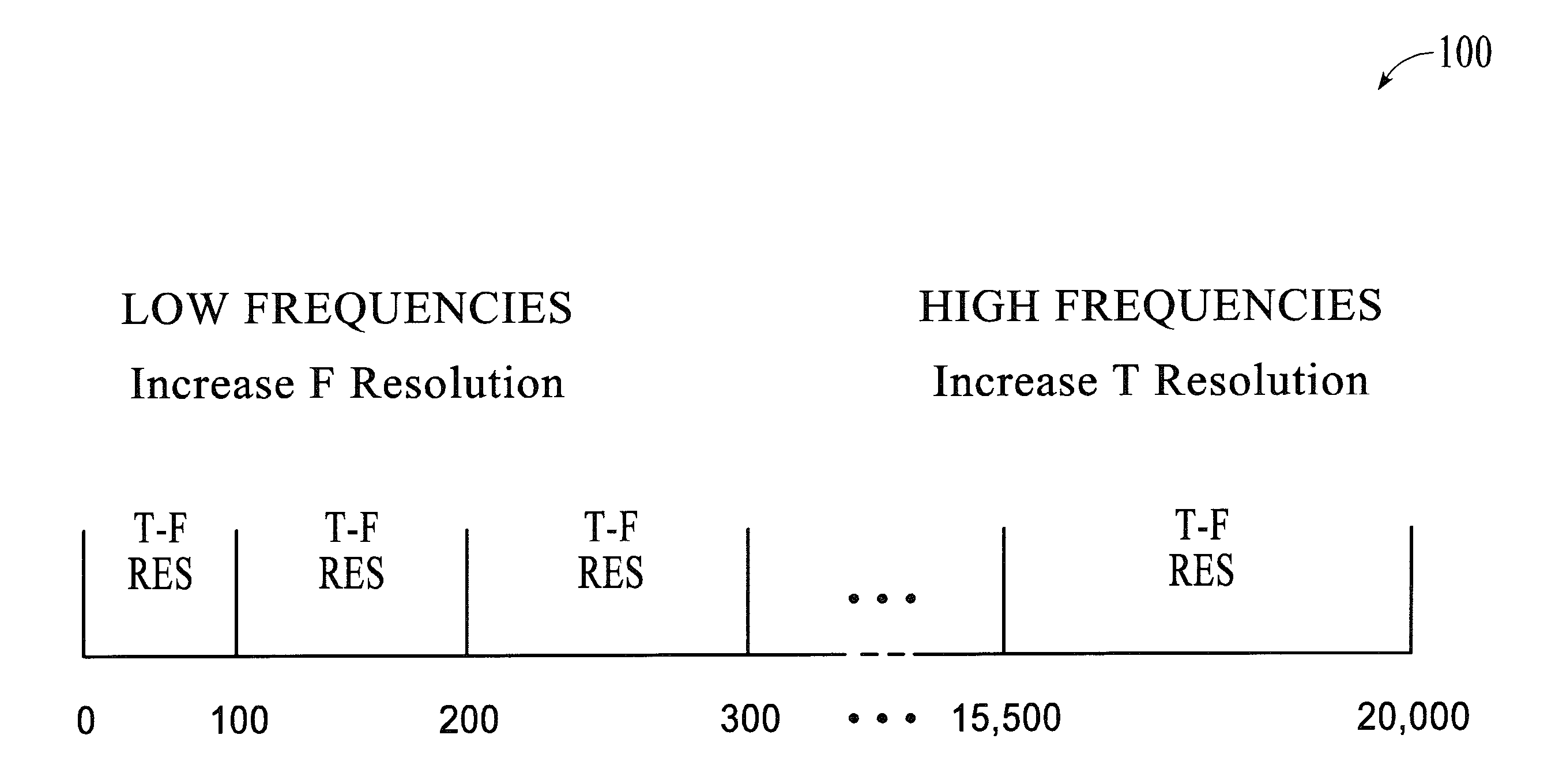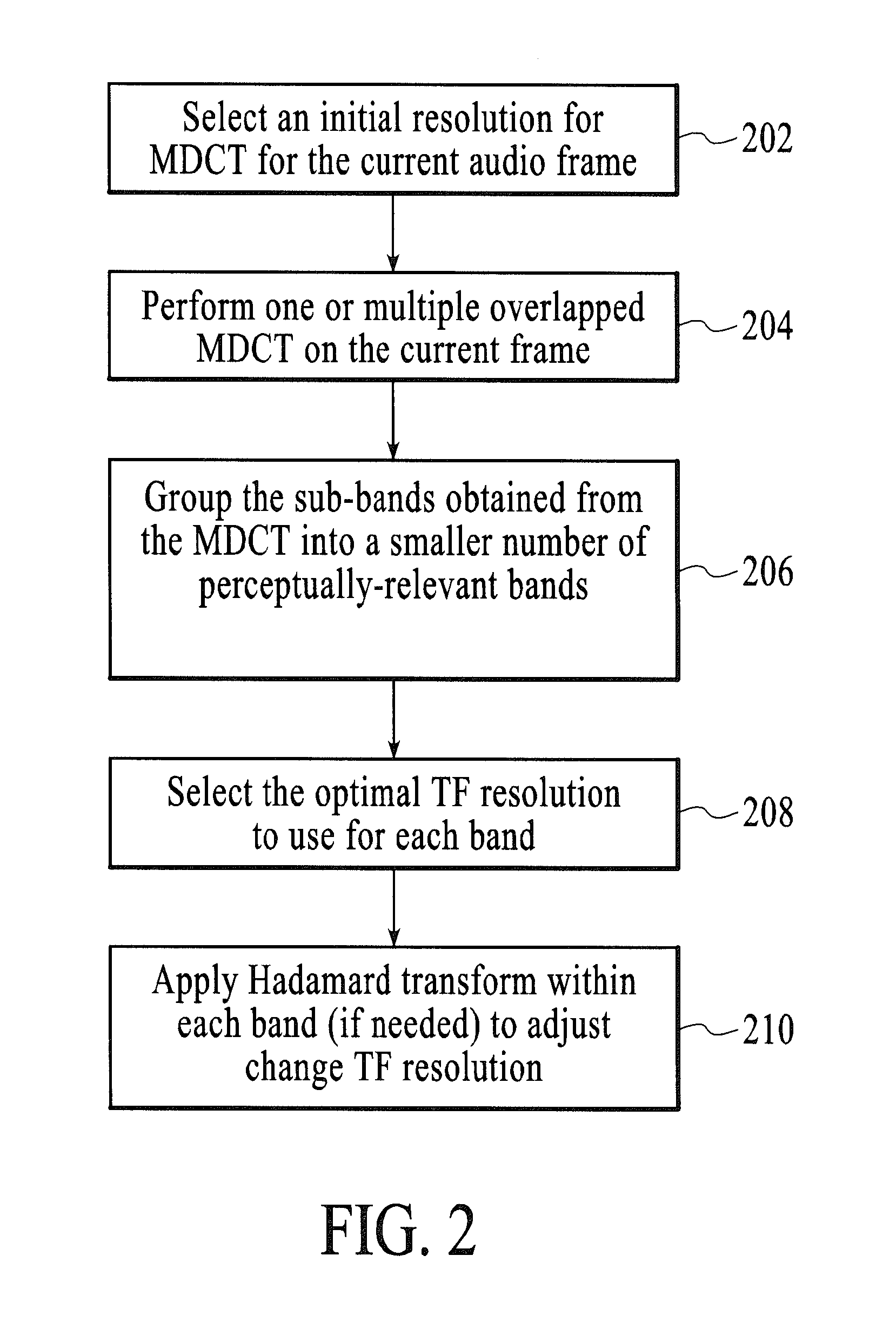Methods and systems for adaptive time-frequency resolution in digital data coding
a technology of adaptive time frequency and digital data, applied in the field of digital communication, can solve problems such as unaddressed embodiments, and achieve the effect of increasing the frequency resolution of individual bands and increasing the time resolution of individual bands
- Summary
- Abstract
- Description
- Claims
- Application Information
AI Technical Summary
Benefits of technology
Problems solved by technology
Method used
Image
Examples
Embodiment Construction
[0018]Systems and methods are described for implementing an adaptive time-frequency resolution process in digital data coding applications. Aspects of the one or more embodiments described herein may be implemented on one or more computers executing software instructions. The computers may be networked in a peer-to-peer or other distributed computer network arrangement (e.g., client-server), and may be included as part of an audio and / or video processing and playback system.
[0019]Embodiments are directed to an adaptive time-frequency resolution component for use in a sub-band audio (or video) codec. In general, sub-band coding deconstructs a signal into a number of different frequency bands and encodes each band separately. This decomposition is usually the first step in data compression for audio and video signals, in which a digital filter bank divides the input signal spectrum into some number of sub-bands. For audio input, a psychoacoustic model may look at the energy in each of...
PUM
 Login to View More
Login to View More Abstract
Description
Claims
Application Information
 Login to View More
Login to View More - R&D
- Intellectual Property
- Life Sciences
- Materials
- Tech Scout
- Unparalleled Data Quality
- Higher Quality Content
- 60% Fewer Hallucinations
Browse by: Latest US Patents, China's latest patents, Technical Efficacy Thesaurus, Application Domain, Technology Topic, Popular Technical Reports.
© 2025 PatSnap. All rights reserved.Legal|Privacy policy|Modern Slavery Act Transparency Statement|Sitemap|About US| Contact US: help@patsnap.com



